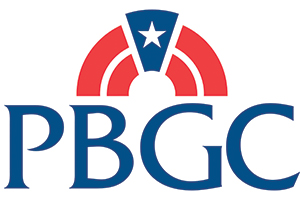About 114 Multiemployer Pensions in Deep Trouble
About 114 multiemployer pensions covering more than 1 million workers are due to run out of money within the next two decades, including the Teamsters’ Central States Pension fund, but according to reports from actuarial consulting firms Segal Consulting and Cheiron Inc. the overall state of the system is healthy.
Cheiron estimates that critically declining multiemployer pensions have $43.5 billion in total assets but owe $79.9 billion in liabilities.
But Cheiron and Segal Consulting concluded that the funds in grave danger represent only about 8-9% of the total number of multiemployer pensions in the United States, and the others are quite healthy.
Latest #multiemployer #pensionplans survey finds zone status differs by industry. https://t.co/dkHw1JL074 pic.twitter.com/A0UrAORxS1
— Segal Consulting (@SegalCo) August 18, 2017
“About 1.5 million people are in plans that are distressed, and that tells me there are more than 9.5 million in plans that are not distressed,” said Diane Gleave, senior vice president and actuary for Segal. “We don’t want to minimize the plans that are in distress and the people in those plans, but we don’t want that to be the only story. We wanted to provide a more balanced view.”
Segal released the results of a survey to provide a larger perspective on the health of the entire multiemployer pension network, which includes 1,300 to 1,400 plans nationwide covering more than 10 million people. The group found that of the 200 plans it surveyed, 65% were in the “safe” green zone, 23% were in the “critical” red zone.

Of the 114 multiemployer pensions that would be considered beyond critical and in serious jeopardy, the Central States Pension Fund was the largest with $17.9 billion in assets and $35 billion in total liabilities, according to an annual Form 5500 filed the Department of Labor and the Internal Revenue Service. The unfunded portion represents the difference between the assets from contributions plus profits on any investments and the money paid out to retirees, beneficiaries and other fees.
The Department of Treasury rejected an application from Central States in May 2016 to slash benefits nearly 50% for retirees under age 75 and require cutbacks to all active members. Fund managers declined to file another application and chose to seek a bailout from lawmakers on Capitol Hill.
The Pension Benefit Guaranty Corp., the federal agency that ensures a minimum pension to retirees, will run low on money in its multiemployer program within the next 10 years, around the same time Central States would collapse.
“Historically, when the PBGC needs more money to pay those guaranteed benefits, they increase premiums. If that happens this time around, you’ll start pulling down otherwise healthy plans into the critical and declining status,” said Joshua Davis, a principal consulting actuary at Cheiron who analyzed the filings.
New York State Teamsters to Vote on Pension Cuts to Keep Their Fund Solvent (Rick Karlin / Times Union) https://t.co/8YmWPTCsHq — Jack Dean (@PensionTsunami) August 23, 2017
The New York State Teamsters Conference Pension & Retirement Fund was listed as one of the 114 critically declining funds with $1.6 billion in assets and $3.2 billion in liabilities.
The U.S. Treasury approved a plan Aug. 3 to slash the fund’s benefits 29% for retirees, inactive vested participants and beneficiaries, and 18% for active participants beginning Oct. 1. However, under the Multiemployer Pension Reform Act, eligible members of the New York State Teamsters fund can reverse the decision of the Treasury if “a majority of all participants and beneficiaries of the plan vote to reject the suspension.” Based on the legal wording, nonvotes count the same as a vote in support of suspending benefits for the purposes of the official tally. The voting is underway, and results are due in the next couple of weeks.
Nevertheless, since the financial crisis of 2008-09, Segal found that the average funded percentage of pension plans hovers between 85% and 89%, above the 80% standard in the Pension Protection Act of 2006.
“Plans that are doing OK are doing OK. They’re not robust, but they have survived whatever problems they needed to get through in the Great Recession of 2008. For plans that were severely damaged in 2008, or even before the recession, they’re still struggling significantly,” said David Brenner, Segal’s national director of multiemployer consulting.
Davis also agreed that while his study isolated 114 critically troubled funds, the multiemployer pension system as a whole is healthy.
“To make a statement that the whole multiemployer pension system is in bad shape would be false,” he said.




